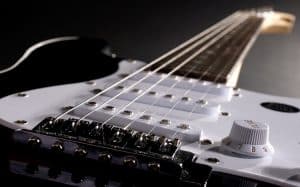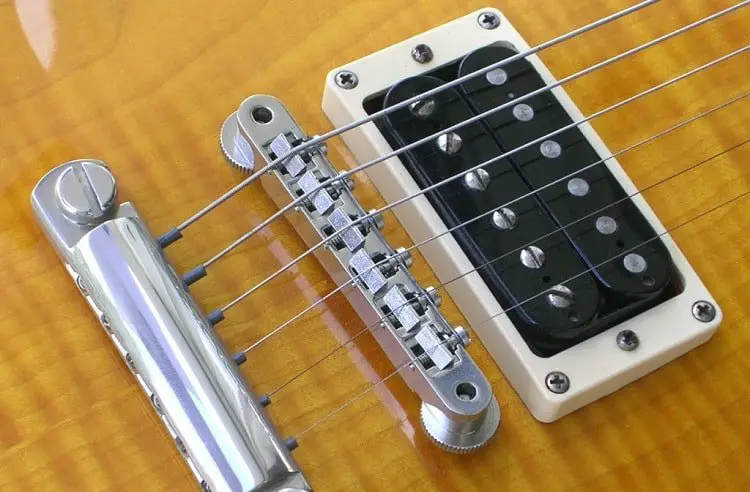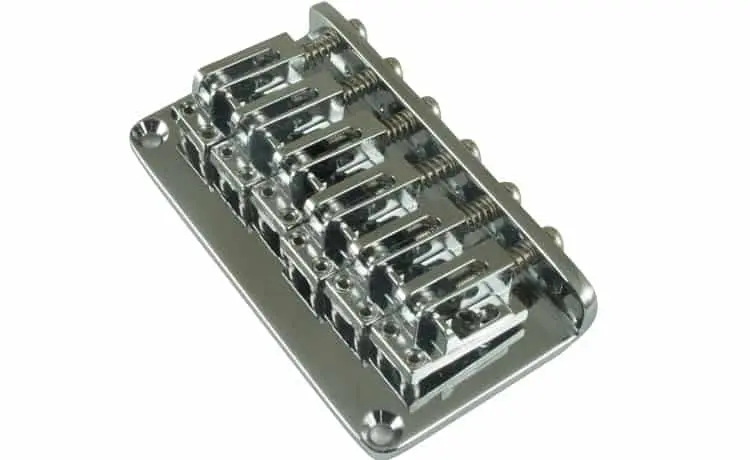 When you start to learn this instrument you truly must know where the guitar parts are, and also what are their basic function.
When you start to learn this instrument you truly must know where the guitar parts are, and also what are their basic function.
Also, it’s very useful when you buy a new guitar and you completely understand the entire set of specifications that you’re getting.
So, here’s something that helps, and, that is the basic Electric Guitar Parts Diagram.
Complete List Of Components
Tremolo Bar
A kind of metal rod that is attached to instruments bridge and that varies guitars string tension. That is done by careful tilting of the bridge in the opposite directions. It’s also known as the vibrato bar, whammy bar, and most often as the tremolo bar.
Body
The guitar box that gives an anchor for important bridge and neck and also creates nice playing surface made for the left or right hand. It also consists of secure housing for the electronics and bridge assembly.
Bridge

The metal type of plate that also anchors the strings of the guitar to its body.
Endpin
A metal kind of post where that strap’s rear end nicely connects.
Fingerboard
A kind of flat, and the plank-like thing made from wood that also sits atop the neck of the guitar, and where you also place your own left or right-hand fingers to create chords and notes. This guitar’s part is known also as the famous fretboard just because those frets are completely embedded in here.
Frets
Thin metal types of bars or wires that are running perpendicular to those strings and that also shorten the very effective length of guitars string vibrating. They are enabling it for the creation of different pitches.
Headstock
The guitar section is one that holds those tuning machines. It provides a safe place for those manufacturers who want to display their logos.
Neck
Quite long, and club-like kind of wooden piece which connects the guitar headstock to its body.
Nut
A grooved kind of stiff or silver nylon that firmly stops that vibrating of the guitar strings beyond guitars neck. Guitar strings also pass through some grooves on the way to headstock based tuners. This is one among those two points where the vibrating strings area ends.
Output Jack
The particular insertion point made that the cord can connect the guitar to an amplifier and some other electronic objects or devices.
Pickup Selector
A simple switch that mostly determines which types of pickups are active.
Pickups
 Bar-like kinds of magnets that also create the right electrical current, so that the guitar’s amplifier nicely converts it into sound.
Bar-like kinds of magnets that also create the right electrical current, so that the guitar’s amplifier nicely converts it into sound.
Strap Pin
Metal type of post where also the top or front strap end completely connects.
Strings
Strings are truly a completely integral part of this whole guitar system, despite that they are autonomous and easily removable as a guitar part. Obviously, without the strings, there is no sound or music.
Top
The guitars face, and in this electric guitars case, this is a decorative or cosmetic cap which overlays the body of the guitar material.
Tuning Machines
These geared mechanisms lower and raise the strings tension.
Volume and Tone Controls
Knobs are the part that varies treble and bass frequencies of the guitar along with its loudness.


